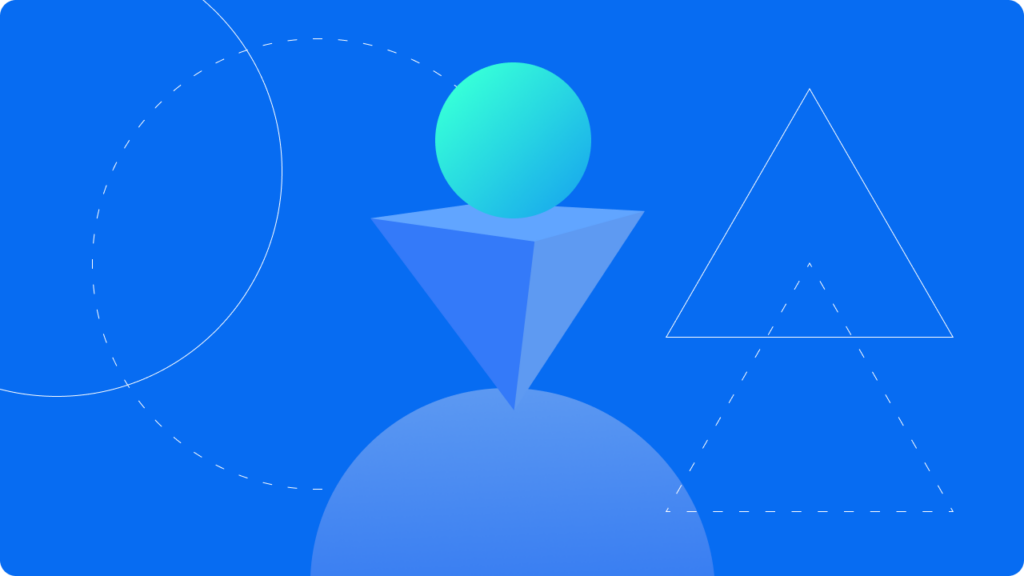So… you’ve fought for budget, purchased seats in our favorite conversational marketing platform, and taken a bet on chat to increase pipeline and qualified opportunities from your marketing efforts.
Now you think you’re ready to build your first bots
Maybe you’ve already launched your first bot, but you’re not seeing the results you were expecting
OR maybe you’ve launched your first bot and are seeing great results but you’re a voracious reader always looking for optimization opportunities.
Well, if you’re in either one of those spots, this guide is for you.

Herein lies everything I wish I would have known before launching my first conversational experiences for B2B marketing purposes.
And a handy Table of Contents to help you get to the meat n’ potatoes:
- Bots/Experiences (do I need more than one bot?)
- A Quick Note on High Intent Pages
- B2B Considerations & Prerequisites
- Building Your Bots
- Building a Home Page Bot
- Building Bots for Your High Intent Pages
Bots/Experiences
Do I need more than one bot?
The short answer is: it depends.
(PS we will be using the terms “bots” and “conversational experiences” / “experiences” interchangeably throughout this guide)
Here at Digital Reach, we’re strong believers in personalization + contextualization along the buyer journey on your digital properties (especially if you’re engaging in ABM).
So, while moving fast and launching your first bot is essential: It’s also important to think about site coverage and how to best contextualize your conversational experiences as users navigate through your site and seek/acquire the information they need.
A users’ objective on a home page is likely completely different than what they’re trying to achieve on a service overview page vs. a contact us page etc.

How do Chatbots Work?
Chatbots respond to a query on a pattern-matching basis. Pattern-matching is a pre-defined set of instructions wired into the system. These instructions help chatbots understand queries and provide a suitable response. Unlike machine learning, the bot cannot learn new information through user interaction. As a result, it cannot address queries that lie outside its scope.
Chatbots play an important role in the customer journey. With an effective chatbot strategy, businesses can offer a superior customer experience and make sure their most pressing questions are answered in seconds, not hours.
A successful chatbot strategy generally relies on intelligent algorithms. Using these algorithms, the bot interacts with users and handles their queries like a human agent. The customer conversations are stored in the database and can be used to improve the chatbot’s responses.
However, these chatbots often pale in comparison to modern AI-based tools like ChatGPT. Therefore, in order to improve bot performance, developers use artificial neural networks, leading to an effective chatbot strategy. Artificial neural network(ANN) is more advanced than natural language processing models.
The ANN enables chatbots to generate responses based on contextual data. Furthermore, ANN-based chatbots get better and stronger by feeding on customer conversations.
A successful chatbot strategy can help customer service teams save time and intervene only when necessary.
Benefits of Chatbots
Creating a chatbot can give your business a competitive advantage and drive multi-faceted growth. Modern chatbots can understand customer intents and deliver a successful customer experience with minimal human agents’ intervention. Let’s look at the various benefits of a chatbot implementation strategy and how it can help your business.
Cost-effective
Customer communication is a crucial part of every business strategy, but it requires a significant investment. Implementing chatbot technology is generally cheaper than managing a traditional customer service model. A chatbot platform can address hundreds of user queries at once. Since there will be no waiting times, chatbots can increase customer satisfaction significantly.
Contextual support
An AI chatbot offers data-driven responses that address customers’ pain points, ensuring meaningful and successful conversations. Since every chatbot interaction is an opportunity for learning and improving customer engagement, these AI tools can build a more robust customer support model than humans can ever achieve.
Customer data analysis
Businesses can analyze various chatbot KPIs to measure their effectiveness. Besides, chatbots offer customer data analytics that helps businesses determine whether their chatbot objectives are being met or not.
Lead qualification
Using chatbots on your website can help you automate lead qualification. The chatbot will handle user queries while asking specific questions to qualify them as warm or hot leads. Once the lead is confirmed, the human agent can take over and close it.
Adaptable
Chatbots are built to serve different facets of a business. Whether you want to build brand awareness, generate leads, handle queries, or collect customer data, a chatbot can be customized to your unique objectives. Chatbots can also be integrated with messaging apps to respond to customers’ texts, especially when you are unavailable. And as soon as you are back, you can speak to your customers following the chatbot conversation.
A Quick Note on High Intent Pages
Now, you might have scanned the title and thought “High Intent Page”
And if your mind instantly went to
“Contact us page/pages with a form?”
Then congrats, because that’s exactly where I’m going with this.
See, conversational marketing is still relatively new for us in the B2B space and so, showing quick wins is supremely important to getting buy-in from leadership and skeptics alike.
The best place to deploy chat with the express intent of gathering data and demonstrating quick wins are:
You guessed it:
- Your Home Page and
- Your “Contact Us” pages
However, before we get into the actual structures of the bots, let’s take a step back and think about your business, positioning, and sales team. This will help us avoid costly or time-consuming mistakes/edits in the process.
B2B Considerations & Prerequisites
Here’s a checklist of questions we run through our clients before we even think about building a bot:
- How complex is your product/service offering?
- Are you a self-service model?
- Do you have a sprawling portfolio of services that means different things to different personas?
- What’s your sales org + customer success structure like?
- Separate BDR, AEs, and CSMs?
- Who’s responsible for actually answering chats (and how quickly are they expected to respond)?
- Who handles chats from prospects?
- Who handles chats from existing customers looking for support, or seeking to purchase additional services?
- How is account ownership codified in your CRM and Drift at the account level, at the contact/lead level?
- Do you even have the capacity to route chats to humans, or should you let the bot do most of the engaging/qualifying/routing automagically?
- Do you have a master Content Mapping document where you can see all of your gated and non-gated assets (everything from blogs to customer case studies and everything in between) by performance and service line?* – more on this in a minute
- Are you actively engaging in or planning to engage in ABM efforts?
- Do you have specific, “Tiered” lists and associated assets for said ABM efforts?
- One to one (usually a list of 3-5 named accounts)
- One to few (usually a list of 10-20 by vertical)
- One to many (usually a broader list by technographic or other firmographic data)
- Do you have specific, “Tiered” lists and associated assets for said ABM efforts?
- What are the critical qualifying / disqualifying questions sales asks? Can you program the bot to ask these questions to make sure you’re not spinning your agent’s wheels?
- Do you want to offer a support branch?
- Do you have an existing Knowledge Base you want to leverage in chat to answer potential pre-sale questions?
- What are the actual objectives you want to ultimately allow users to achieve when interacting with your bot?
- Again: do you want to offer human interaction?
- What kind of content can you leverage for people that are not ready to convert?
- How do you position your service portfolio within the chat flow to direct people to the most relevant resources?
- Reporting
- What’s your current attribution tech stack? Single Touch, First + Last Touch, Multi-Touch?
- What are our definitions of success? (these may vary by bot)
- Conversations?
- RFQs/Demos/Meetings?
- Email Submissions?
- Support ticket deflections?
- Webinar Sign Ups?
- For those of you with existing chat deployments
- Do you have existing conversational data you can mine?
- How is our bot greeting performing?
- Are you testing our greetings and/or flows?
*Quick note on “content mapping: A content mapping exercise is one of the first things we run through with clients (for multiple service lines). We’re firm believers that relevant content is the jet fuel 🚀 to a high performing marketing engine.
So, if a chat user is not ready to submit their contact information via chat: How can you leverage current/new content to divert them to the right gated or ungated asset to keep them engaged? A content mapping (by service line, funnel stage, and (hopefully) persona is the clearest way to guide those efforts)

As you can see, there’s a laundry list of questions to answer before hopping in and building your first bot experiences. But, again, trust us. We’re speaking from experience:
This will help you avoid costly or time-consuming mistakes/edits in the process
If you’re confused about where to start: ping us and we’ll gladly point you in the right direction.
Building Your Bots
Congrats! You’ve made it this far.

Let’s dive into our recommended greetings, initial user options, and additional paths to consider when building your first bots
Benchmark Data
Here are some benchmarks to shoot for (according to internal data from our good friends over at Drift)
* A quick caveat: bots are an art and a science, these are broad guidelines, but what works best for your brand, services, and audience will require testing.
High-level benchmarks
~2% for Initial Engagement Rate
~14% for Email Capture Rate
~2% for Meeting Rate
~30 seconds or less for Median Agent Response Time
Lastly, a quick primer on Greetings, Initial Options, and Additional Paths
Bot Greetings
Are like first impressions. Your bot’s greeting message is a leading indicator of success. If you can’t get your audience to engage with your bot in the first place, everything else is in jeopardy. Your email capture and meeting booked rate will subsequently suffer.
Take some time to thoroughly understand who you’re addressing and where they are in their buyer journey. Also, Drift and most other bot-building platforms will limit the number of characters for your bot’s greeting message (Drift’s is 100 characters). Pay close attention to this limit and try your hardest to get your point across without getting truncated…
Lastly, a note on personality:
Can you open with a cheeky joke? Is your bot a people pleaser with lots of exclamation points 😃 !? or more of a Jedi sage 🧙 with staccato delivery and wise quips?
How strict is your brand team?
At the end of the day: we encourage you to push the envelope of your bot’s personality while staying true to your overarching tone and branding guidelines.
If all else fails: open with your unique selling proposition with a loss aversion/problem statement positioning. (keep reading for concrete examples)
Initial Bot Options
When I say “initial options” I’m referring to the first round/layer of buttons users interact with after clicking on your greeting message. We recommend sticking to a max of 3-5 and thinking about where you want to direct traffic. Do you want to account for and directly address existing customers who may be looking for support?
See the screenshot below for a strong example:
Side note: featuring a “just browsing” option can be pretty successful.
Additional Bot Paths
To avoid getting overwhelmed: it’s important to start small and focused when building initial bots.
“Rome wasn’t built in a day”
Think of all of the paths someone can take when browsing your website. There are likely hundreds or thousands of permutations. BUT, we don’t want to (and quite frankly, probably can’t effectively) recreate all of those paths in a conversational experience. We do want to think about the top/most important paths we want to guide users down.
Path 1: The “Golden” Path (AKA, someone is ready to submit their contact info / talk to a human)
Path 2: The “I need more convincing/I’m just starting to learn about your services and brand” Path
Path 3: The “I’m looking for support” Path
Additional Paths you can think about adding to your home page experience after you take care of the critical paths:
- Webinar sign-ups
- Case study push
- Natural language queries + free text response (this is an advanced feature and requires quite a bit of prep work to do right)
- Etc.
Alright, here’s the meat and potatoes. The main event. What you’ve all been waiting for. Feel free to swipe this copy or file>save these images for your reference when you or your team are building out your first bots

Building a Home Page Bot
- Greetings
- Hey, can I ask you a quick question?
- Looking to {solve x problem}? I can help, try me!
- Searching high and low for {your services}? Well, you’re in the right place!
- Hey there! Are you ready to {x benefit}, faster?
- Hey there! Want to learn more about {your company’s} process?
- Hey there, wanna hear a joke about {your industry/product/service offering}?
- Hey there! I can help you learn more about our suite of services. Try me!
- Hey there! Think you can list all 6 reasons why leading enterprises work with {your company}?
- Initial Options
- As you can see in the diagram, there are three initial options
- A “golden” path option for people that initially align with your bot’s greeting
- A “just looking around” path for people who maybe don’t as eagerly align with your bot’s opener, but who are open to learning more about your brand/services
- And an “I’m a current customer looking for support” path which should be pretty self-explanatory.
- As you can see in the diagram, there are three initial options
- Additional Paths
- At the bottom right of the diagram, you’ll see an option for users to continue learning about your service/brand after initially declining to convert. Use this opportunity to send users to service overview pages or collections in your website’s resources section
As a general rule of thumb, these suggestions and the above diagram are meant to be “broad brushstrokes” and by no means exhaustive. There’s tons of legwork left to do (from a copywriting standpoint) even after all of the above.
Building Bots for Your High Intent Pages
A quick note on “High Intent” Pages: depending on your product/service complexity: you likely at least have a Contact Us Page on your site (and maybe a few others where users can book a strategy session or similar). This architecture can pretty much be copy/pasted across those pages. The strategy here is the same for all “bottom of funnel” pages:
a) get out of your users’ way (collect their contact information swiftly) and
b) allow them to book time directly on an SDR’s calendar
- Greetings
- We can help with your {x challenges/problems} 👋. Ready to book some time?
- Ready to chat with our team? You can skip the form and book a meeting right within this conversation!
- Let us solve your {x challenge}. Skip the form and book your {y meeting right here! 👋
- Initial Options
- A “golden” path option for people that initially align with your bot’s greeting
- An “I have a question” path for people who maybe don’t as eagerly align with your bot’s opener, but who are open to learning more about your brand/services
- Additional Paths
- None recommended. We want to keep a laser focus on the conversion goal here for users that have made it to these pages.
A Reminder
But wait. Before you leave:

Again, I’d like to reiterate: these suggestions and the above diagrams are meant to be “broad brushstrokes” and by no means exhaustive.
There’s tons of legwork left to do (from a copywriting standpoint) even after all of the above.
However, this should give you some decent inspiration to get started!
As always, drop us a line if you have any questions. We’re always happy to chat 😉!







